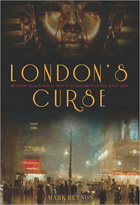
![]()
By Mark Beynon
IPG, $34.95, 224 pages
Mark Beynon’s London’s Curse tells the story of London’s West End in the 1920s and 30s, when the world, and London in particular, is in the grip of “Tut-mania” after the discovery of the tomb of King Tutankahmun by an English expedition in 1923. The first part of the book deals with the idea of a “Mummy’s curse” and how the story of that curse was spread by the newspapers and the often yellow Journalism of the early 20th century. The second half of the book deals with one of the time period’s most notorious figures, Aleister Crowley, also known as “the Beast,” one of London’s principle occult figures of the time. The second half of the book is less successful in its mission. Beynon states that he will “argue for the prosecution” in trying to tie the deaths associated with the Mummy’s curse to Crowley, but most of his evidence is circumstantial at best. The organization of this half of the book is also slightly unclear, as it moves forward and backward in time, and often comes back around to the same event several times, without adding significant clarity. The biggest problem with this book is that the first half and the last half don’t seem to go together. The beginning is a well-written history and analysis of the impact of the media and the idea of the curse. The second half is a much weaker true-crime story. Real true-crime buffs will likely by slightly put off by the inclusion of fictionalized episodes, but they are probably this book’s best audience.
Reviewed by Katie Richards
[amazon asin=0752463128,B0071LTU20 &text=Buy On Amazon&template=carousel]
